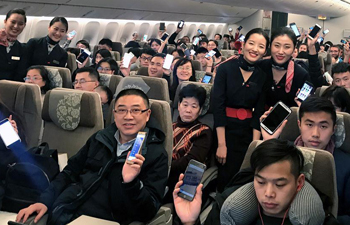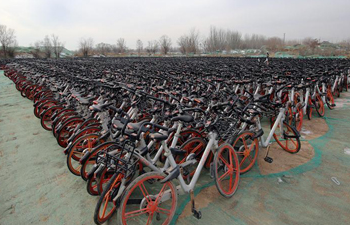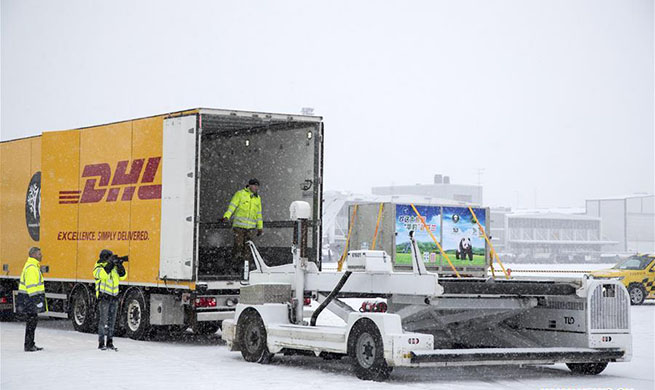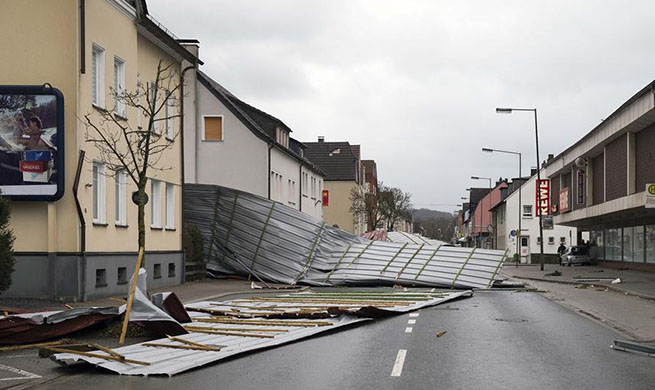QUITO, Jan. 18 (Xinhua) -- Chinese technology is helping Ecuador boost its abilities to fight crime and respond to emergencies, said a top Ecuadorian official on Thursday.
In more than a year, the technology put to use at the Laboratory for Comprehensive Security Systems has already cut down on crime, according to Sixto Heras, deputy director of the ECU 911 Integrated Security Service, whose headquarters in Quito houses the lab.
The ECU 911 center, which began operating in November 2016, has an integral emergency response and a monitoring system.
The system features a high-tech network of video cameras installed across 24 provinces in the country, and software specially-designed by Ecuadorian and Chinese technicians to manage the network of 16 regional centers nationwide.
Previously, only three major cities, Quito, Guayaquil and Cuenca, had some degree of video monitoring capacity to combat crime, said Heras.
The China National Electronics Import and Export Corporation (CEIEC), which helped implement the laboratory, "has been fundamental, because they established the technology that allows us to coordinate all the management of emergencies," said Heras.
Before launching the system, two Ecuadorian delegations traveled to China to get a firsthand look at similar centers and the way they operate.
"Based on their experience, we adapted the technology to our local reality ... to create a new operational management model that today serves as an international model," said Heras.
Since implementing ECU 911, the crime rate has dropped by 11.8 percent, according to Ecuador's National Statistics and Census Institute (INEC).
All of the country's various security and emergency services and agencies, including the Police Department and Ministry of Health, are now integrated into the system.
Wang Fei, manager of the CEIEC, said that 10 Chinese technicians specialized in software, communications and other fields, work at the laboratory.
"Since 2016 they have contributed to creating new products for ECU 911," said Wang. The technicians will continue working there until 2019, mainly to maintain the hardware.
In addition, the center's hardware can also be used in anti-crime tactics.
"The hardware we have ... allows us to use facial recognition technology. We have already applied it in Cuenca and at the airports in Quito and Guayaquil," said Heras.
Juan Carlos Leon, director of technological innovation at the laboratory, said they are experimenting with Chinese surveillance cameras to see the possibility of using software to extract useful information from video footage and turn it into data, which greatly saves time.
In the meantime, the lab has implemented a geolocation program called "Mobile Locator" to track mobile devices, such as phones, which offers a key advantage in rescue operations.
"It's a tool that lets you locate a mobile device and track it. That has been essential in rescues, and in identifying people who are lost or kidnapped. This technology can improve police operations," said Leon, adding that the technology has helped solve thousands of cases.

















